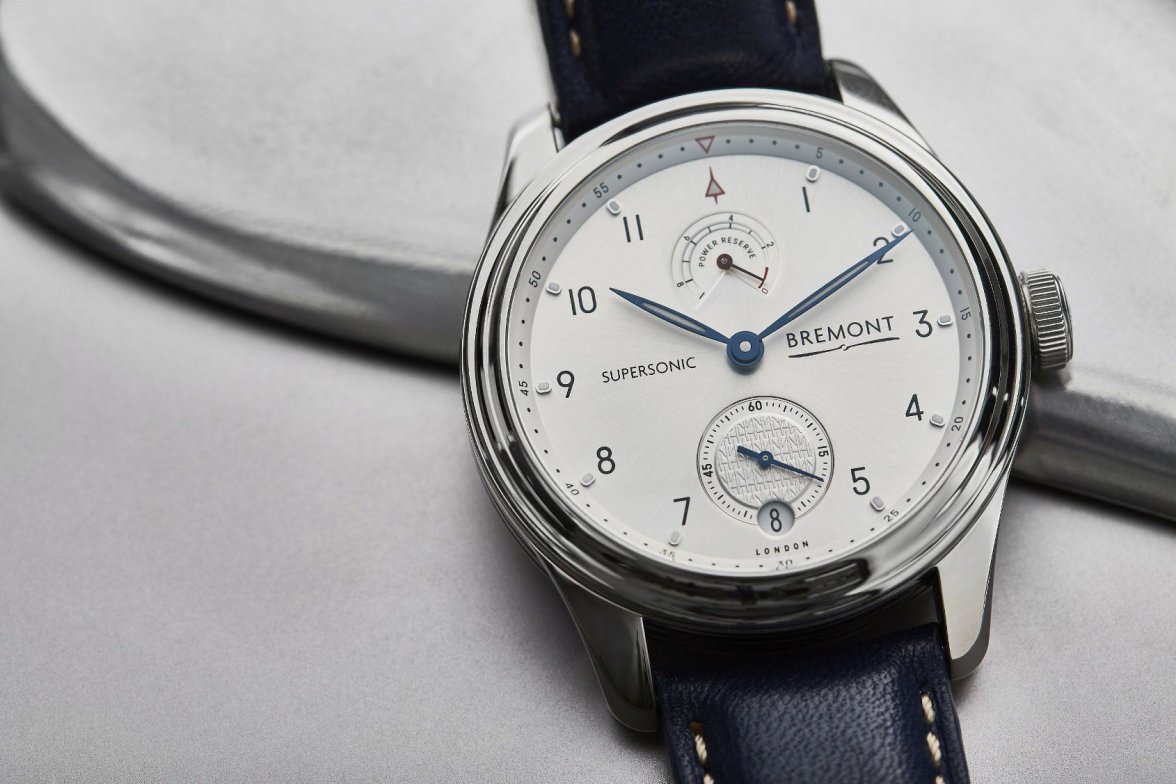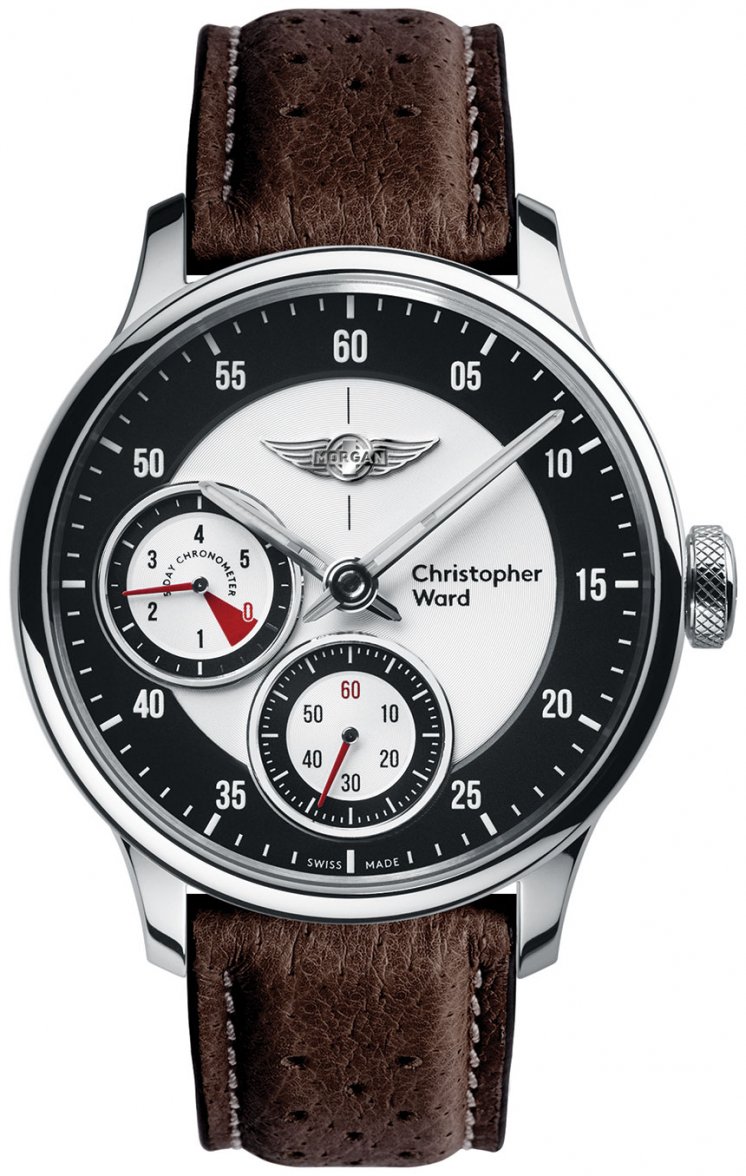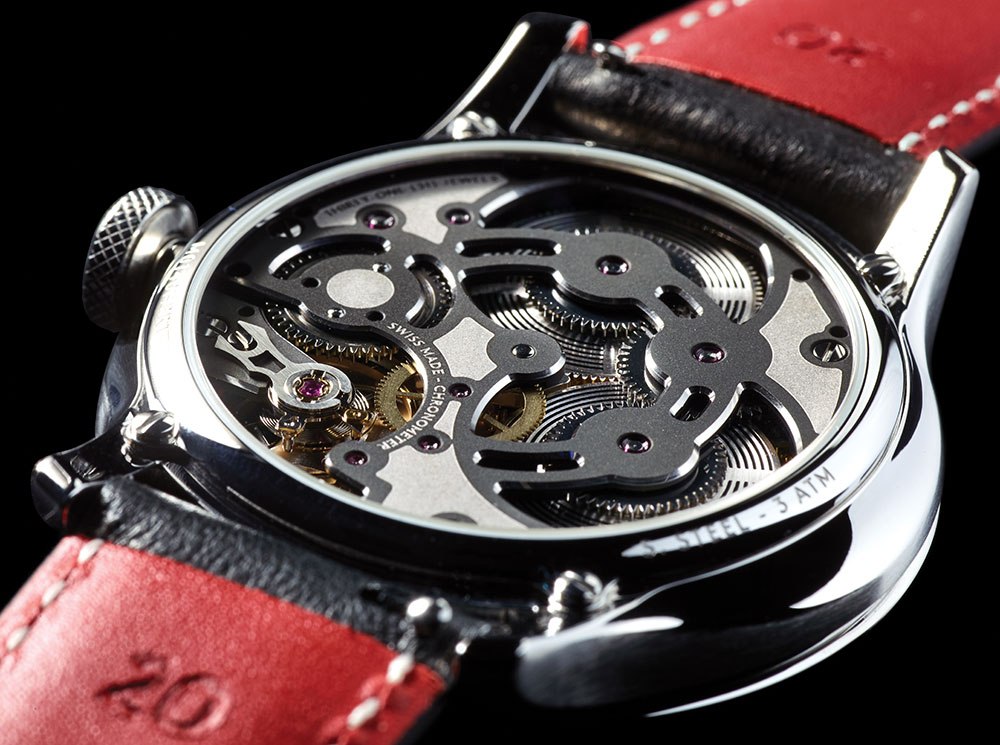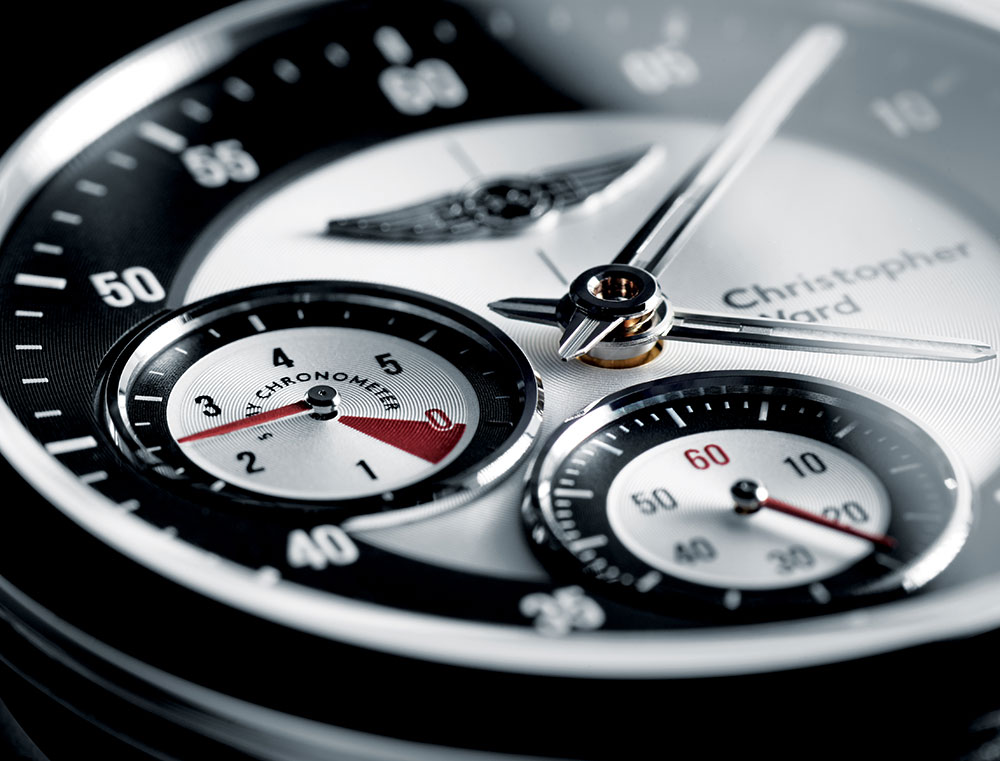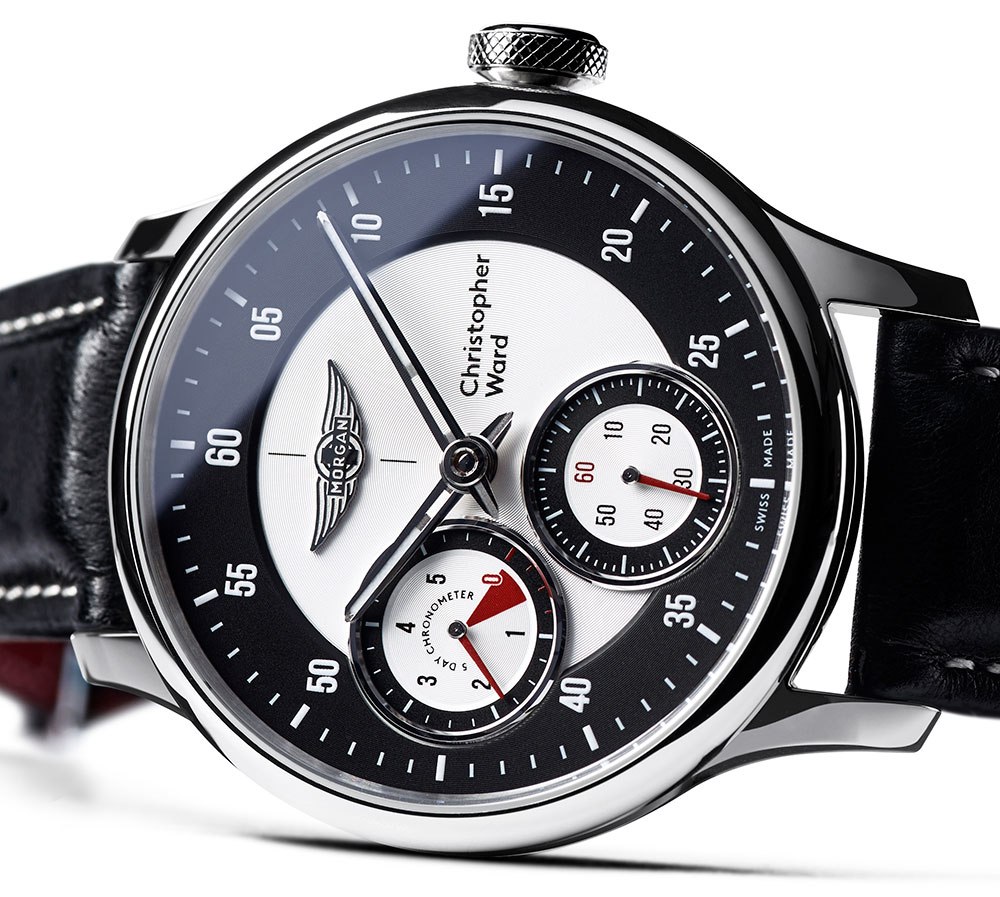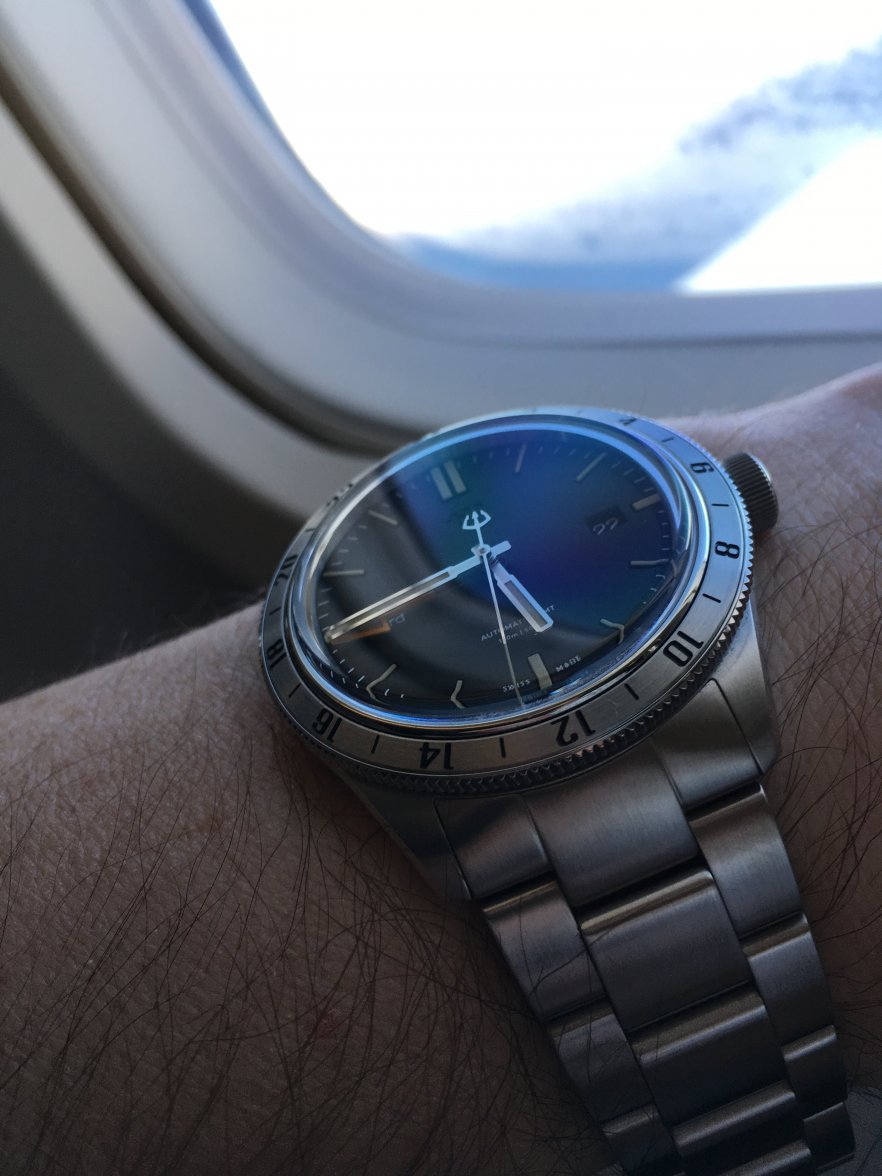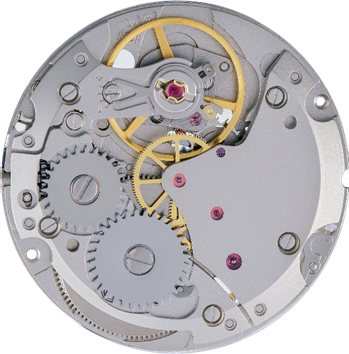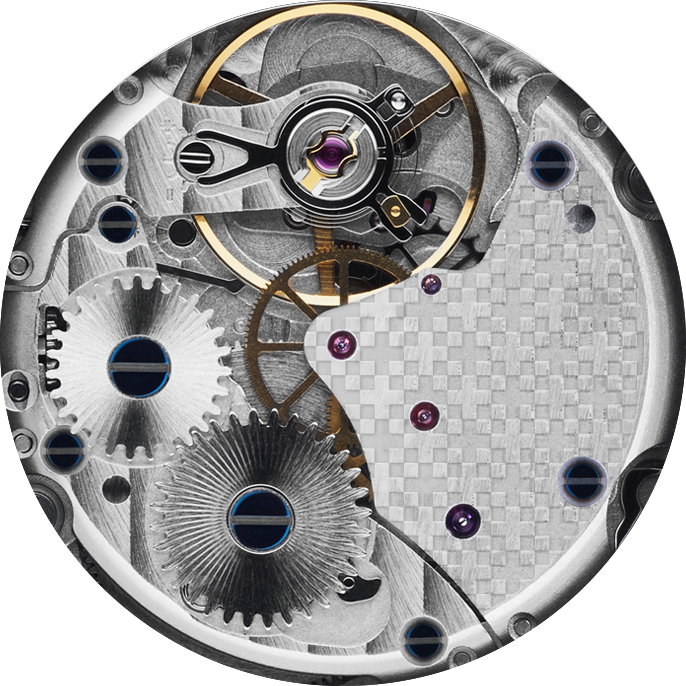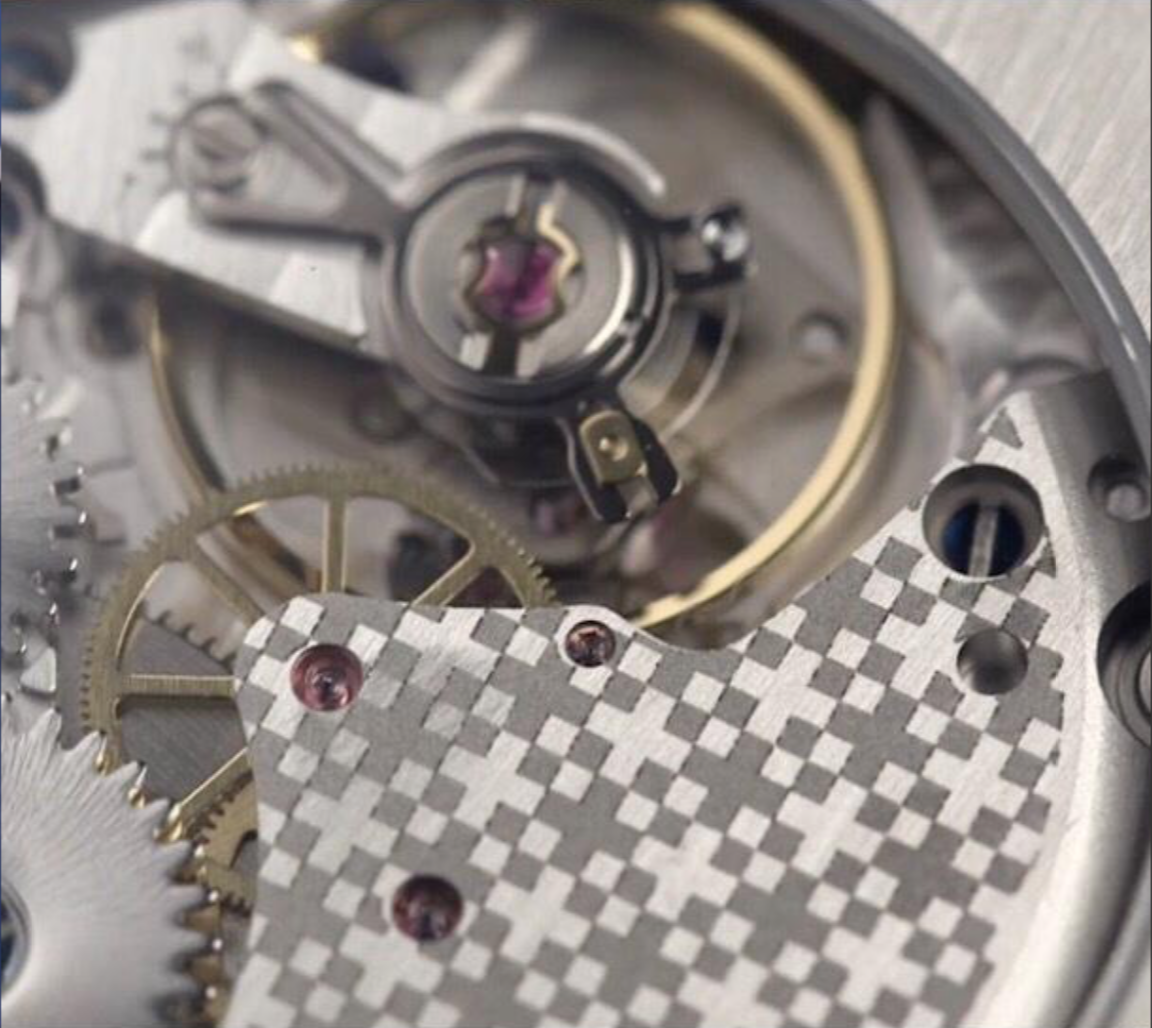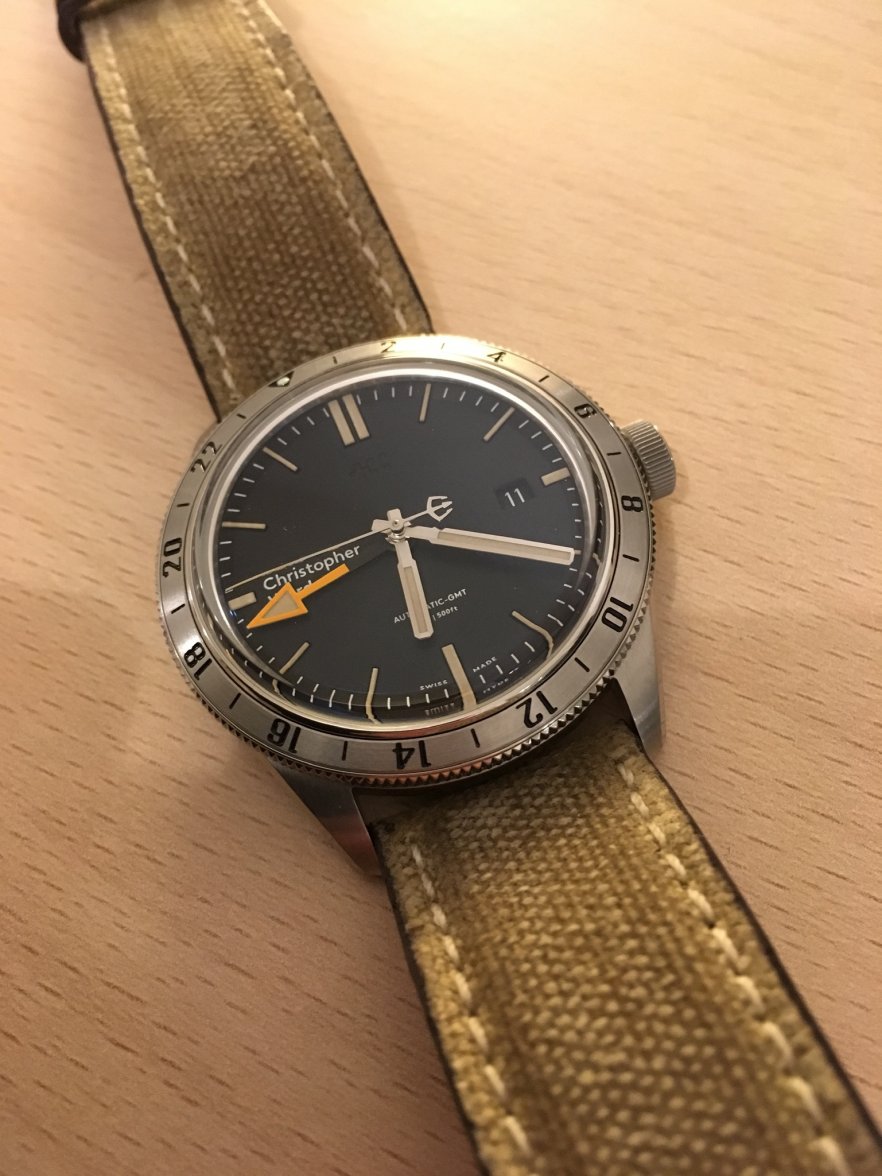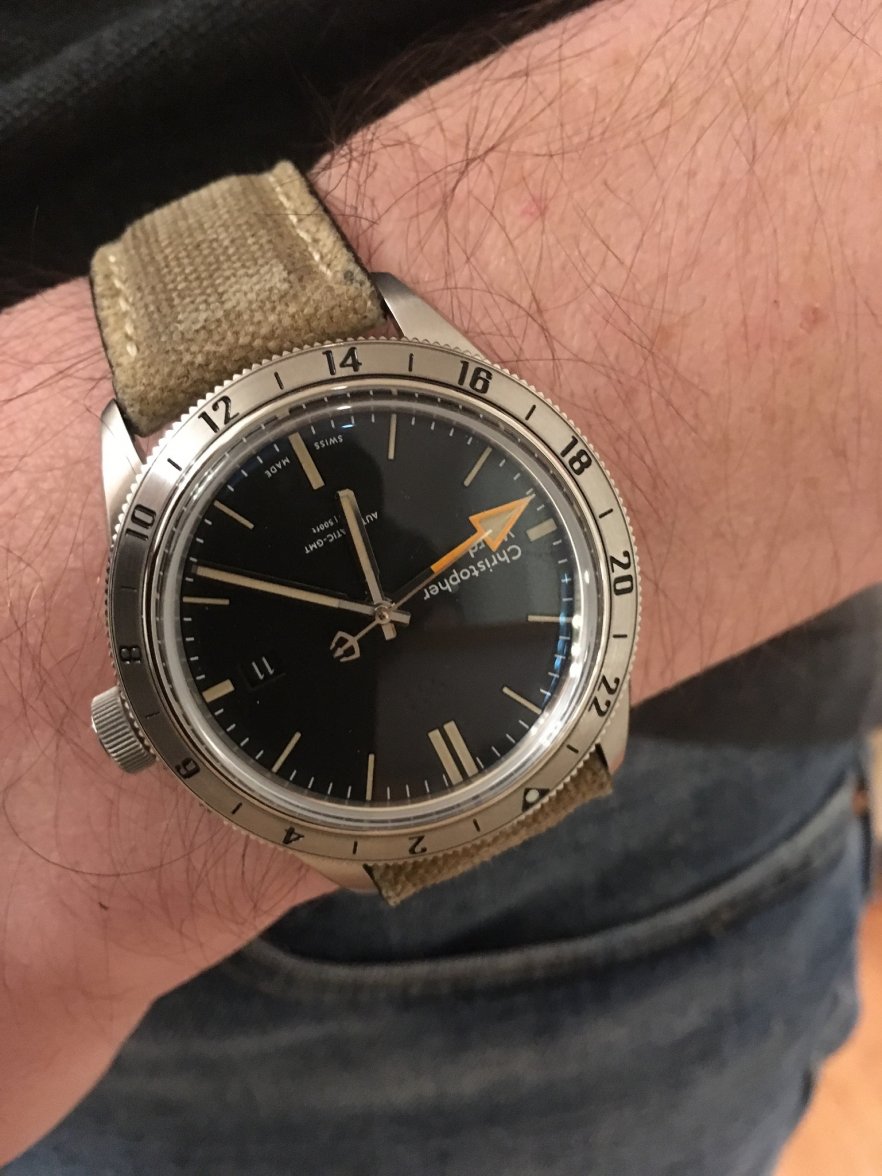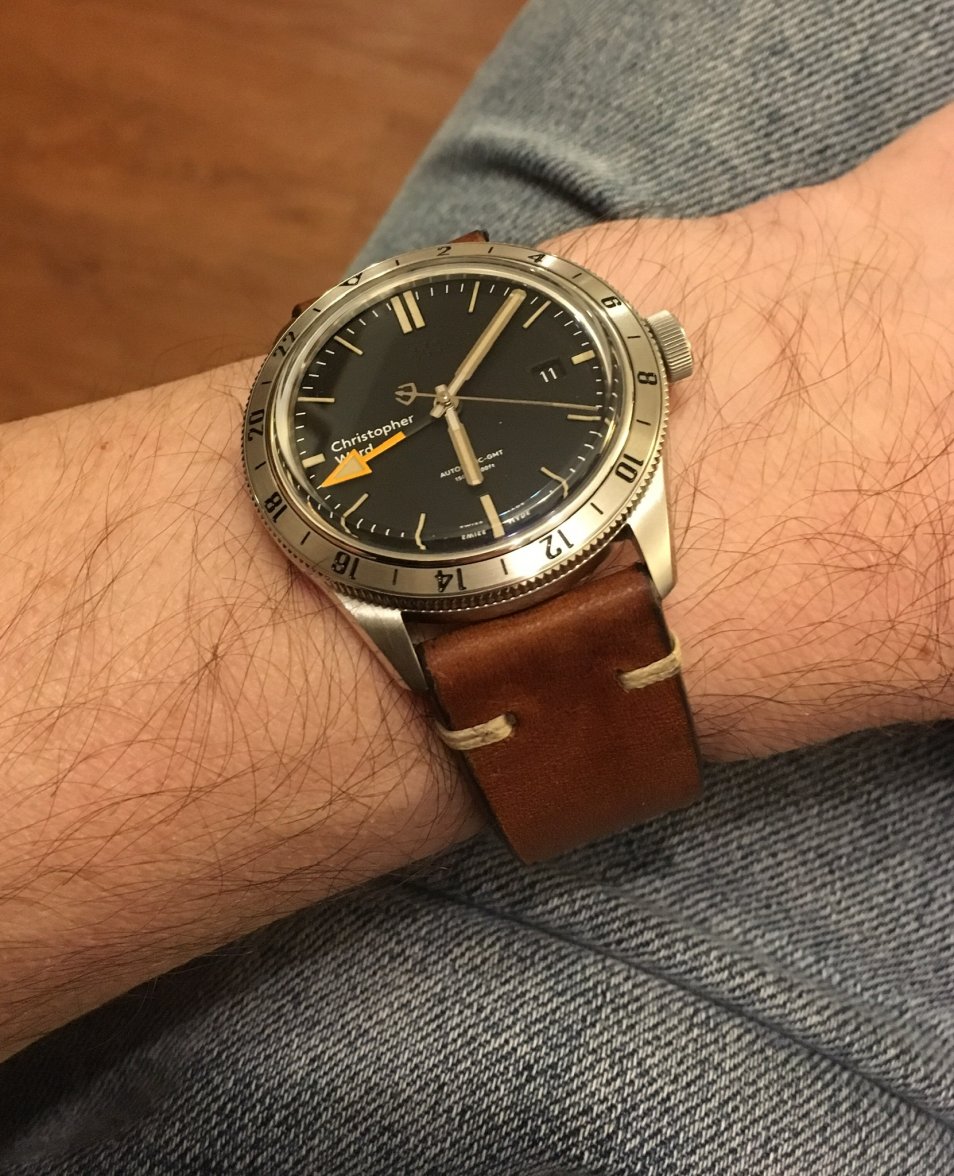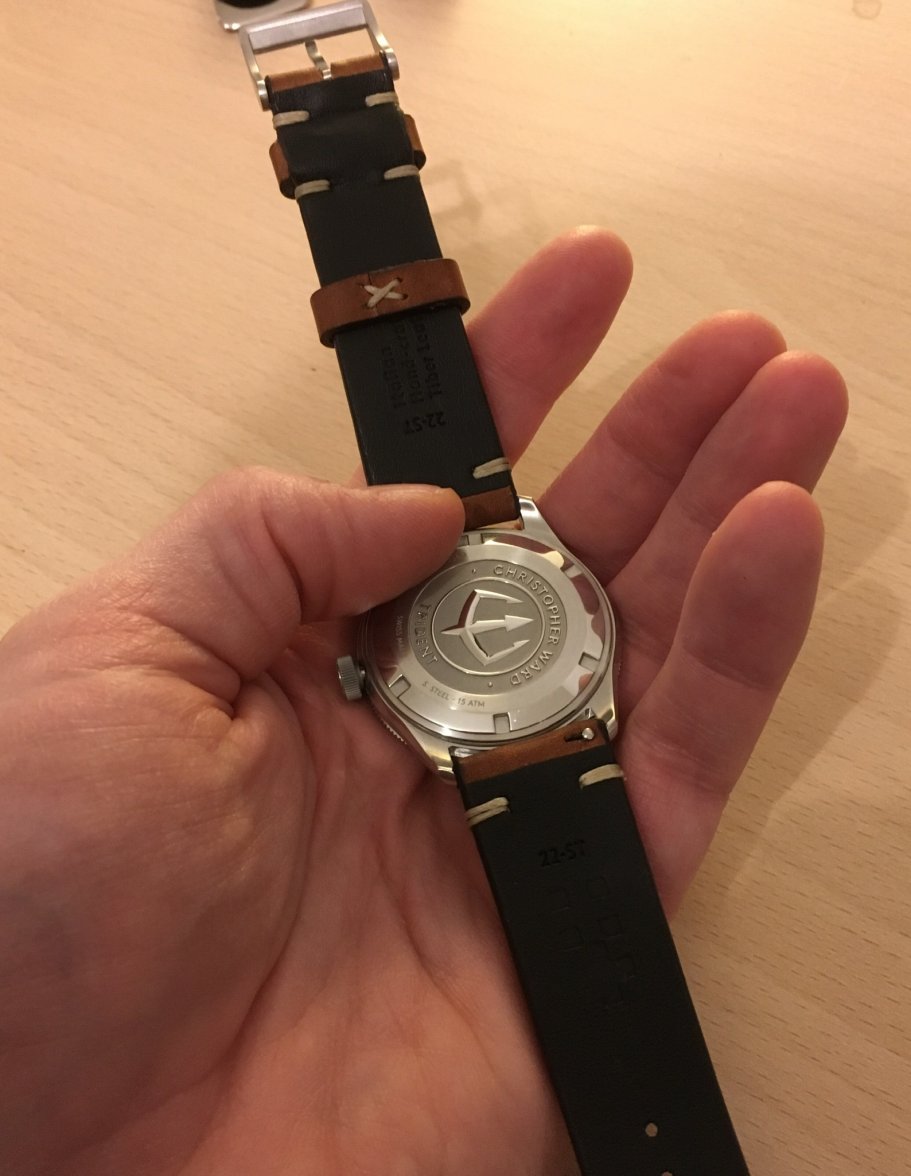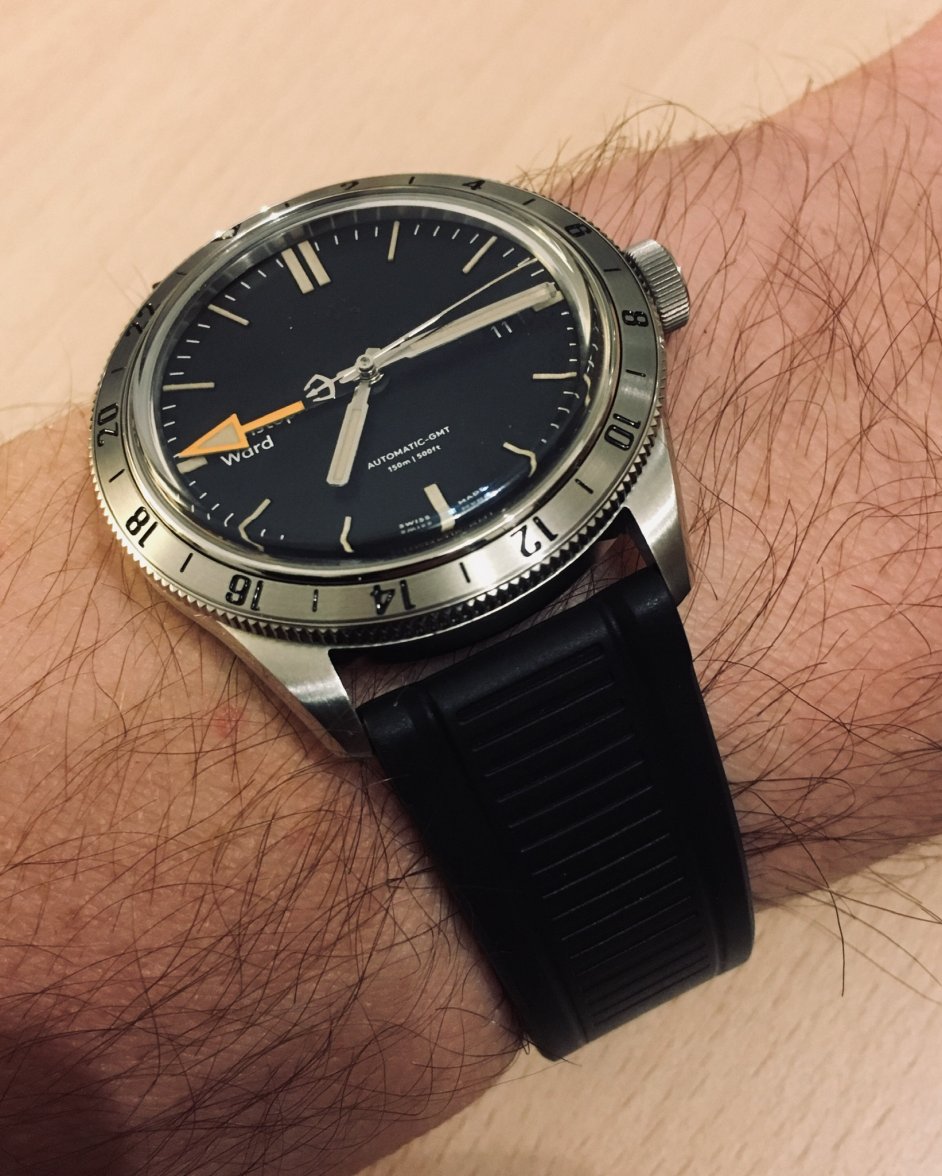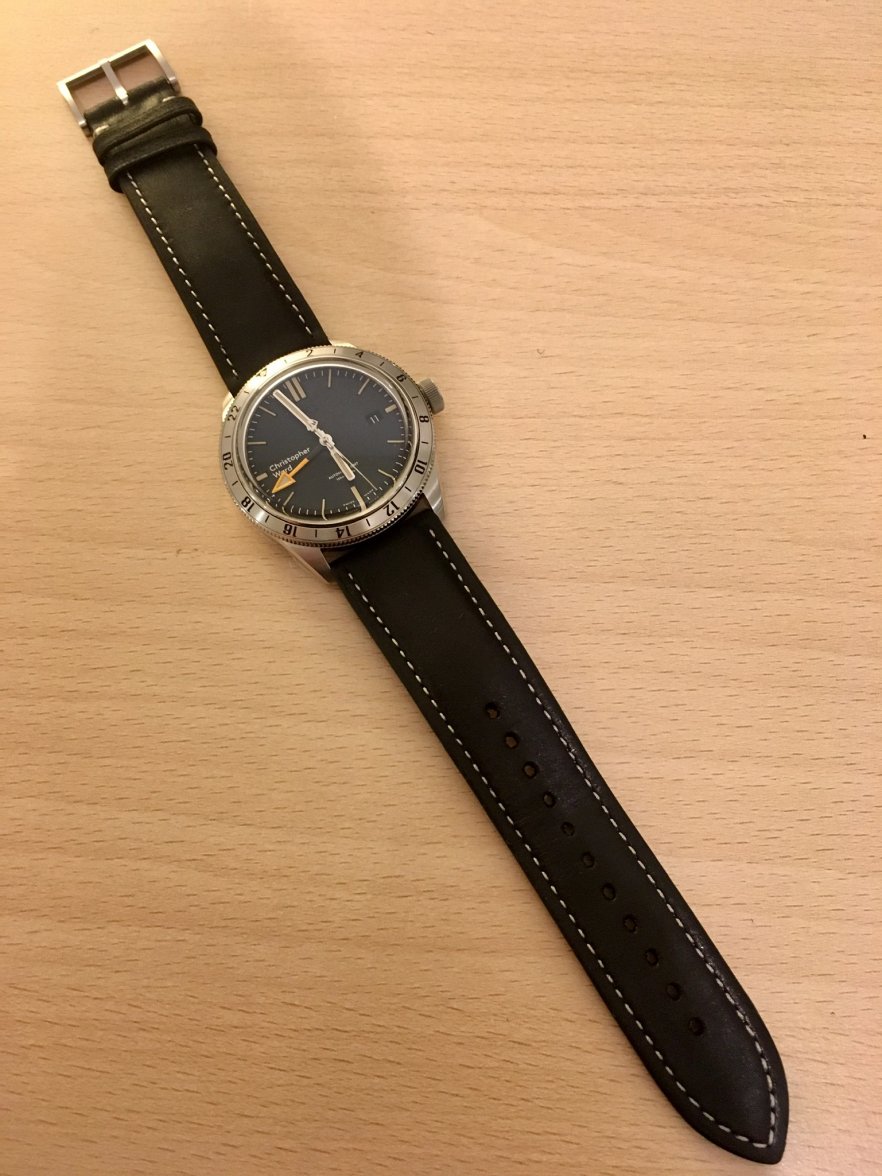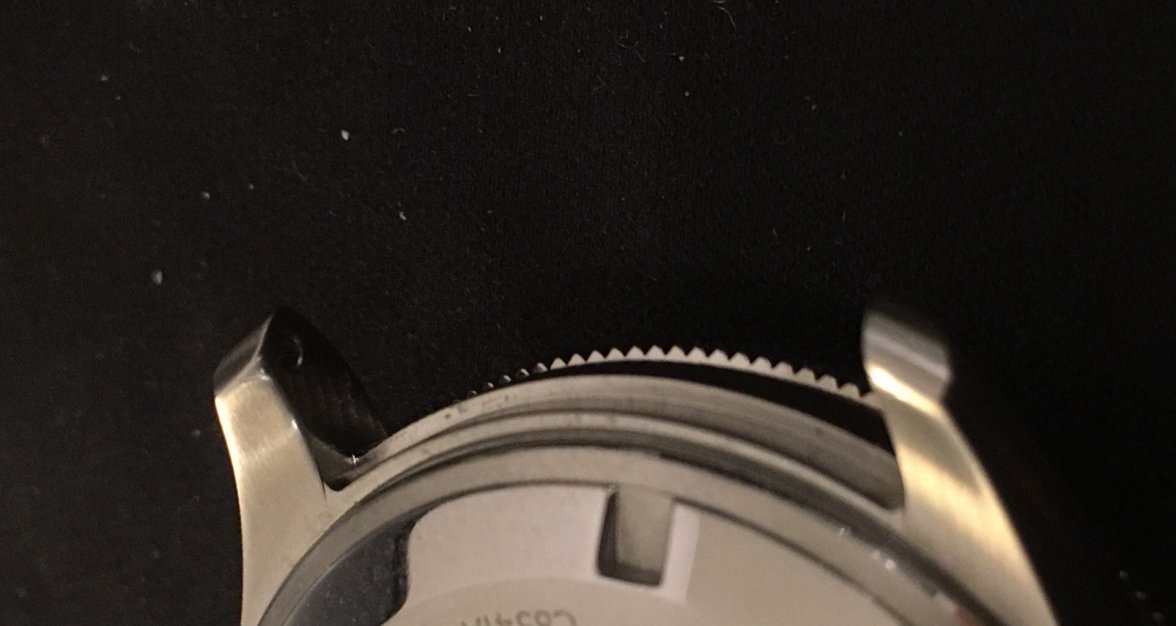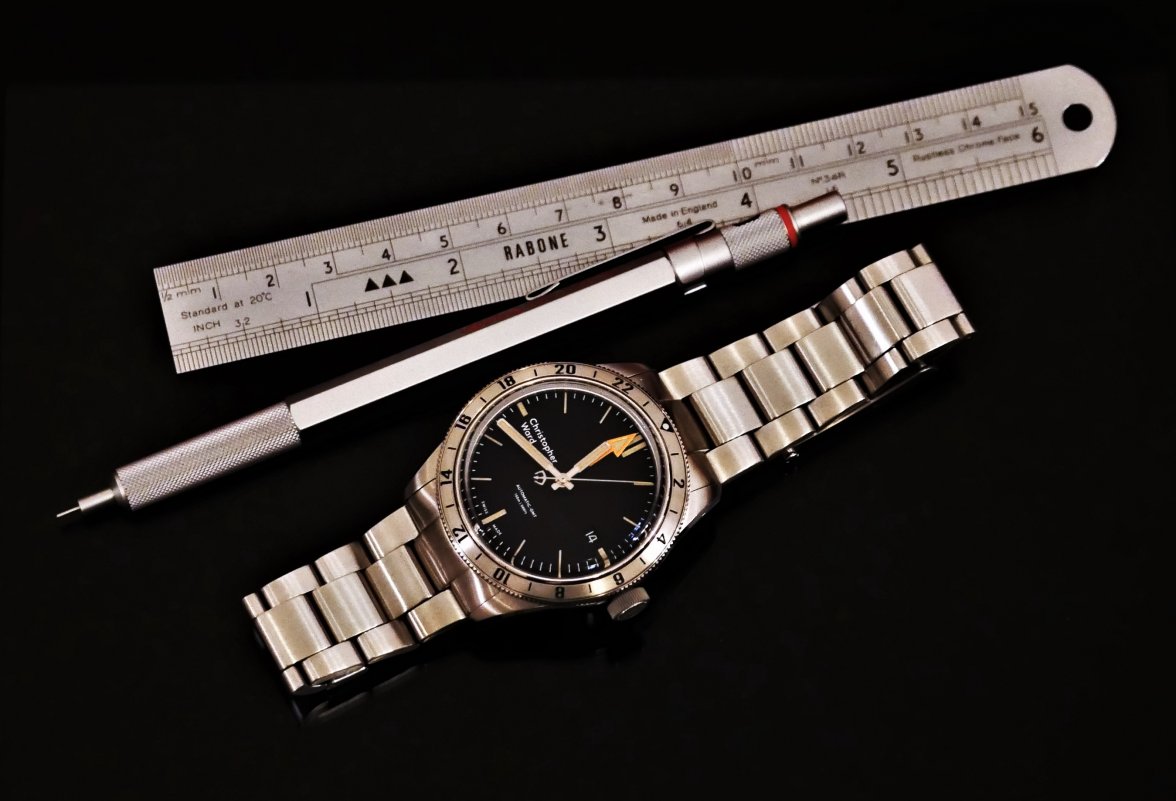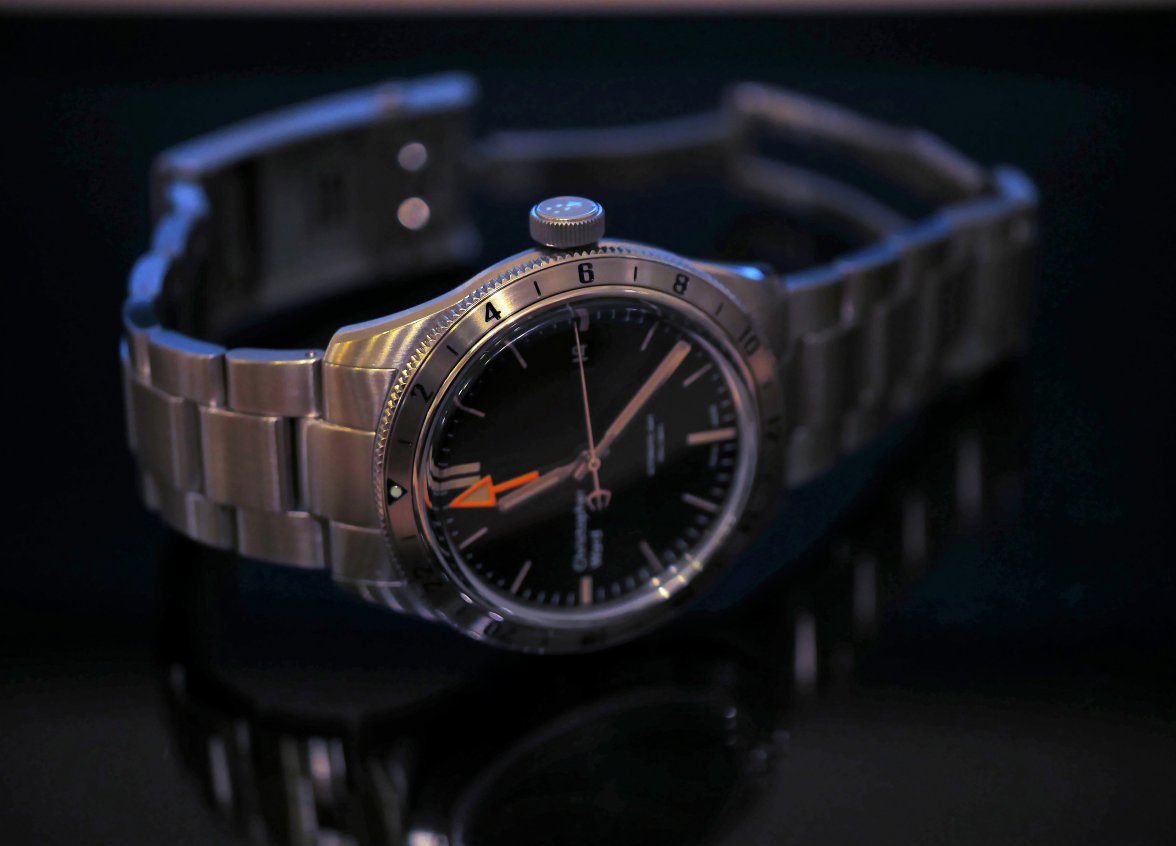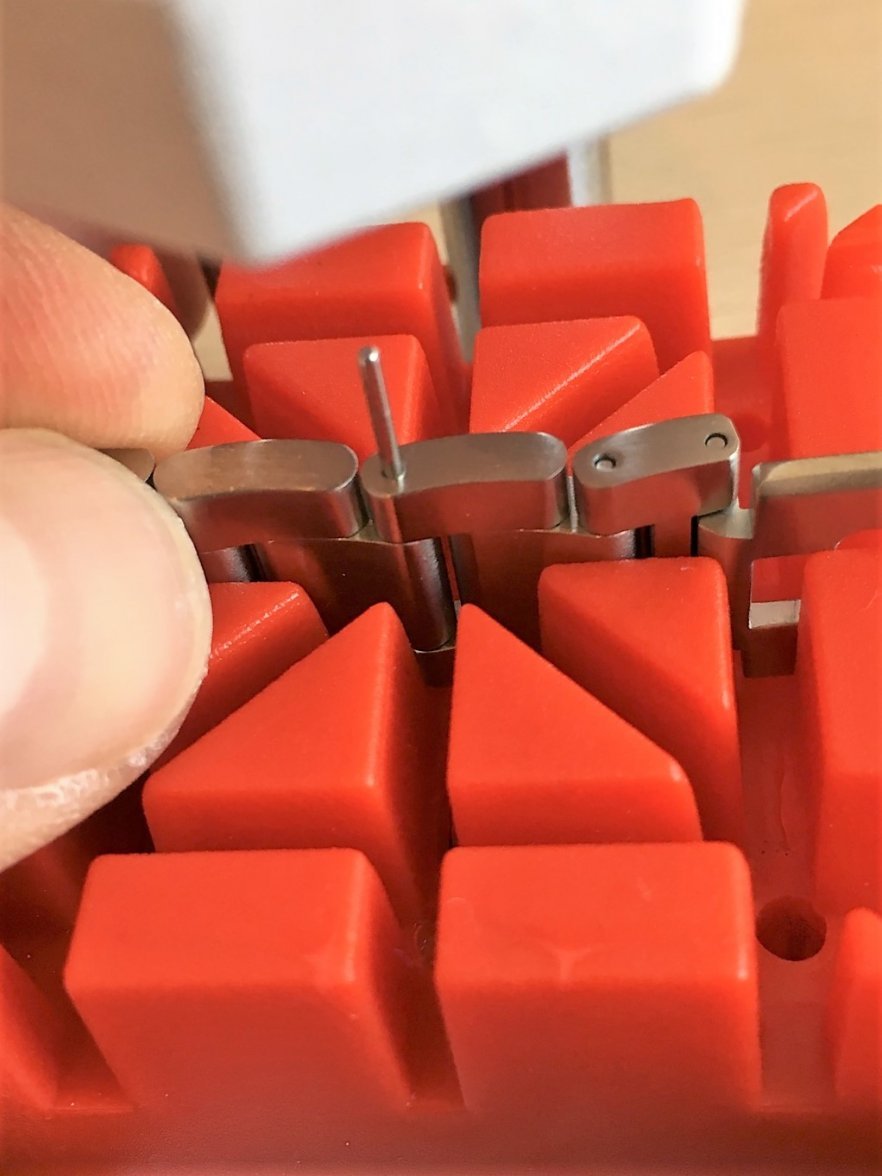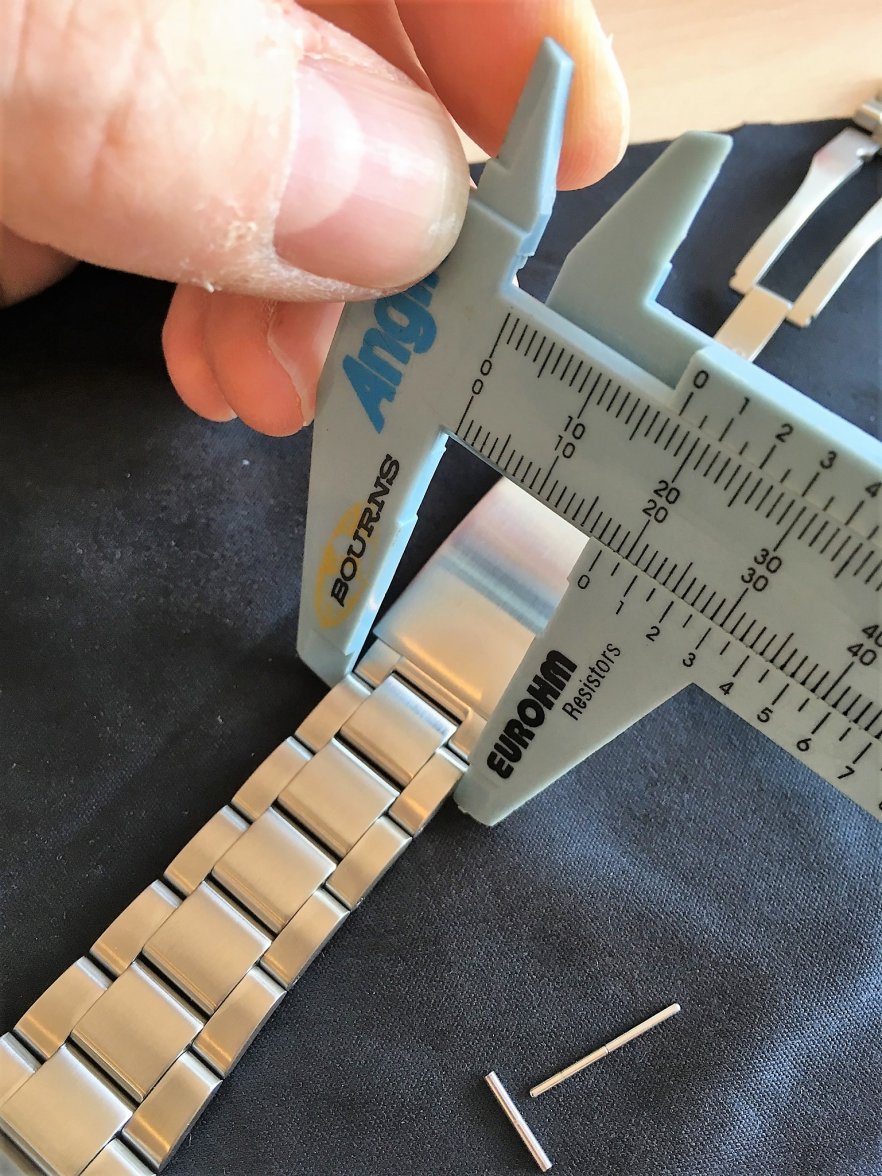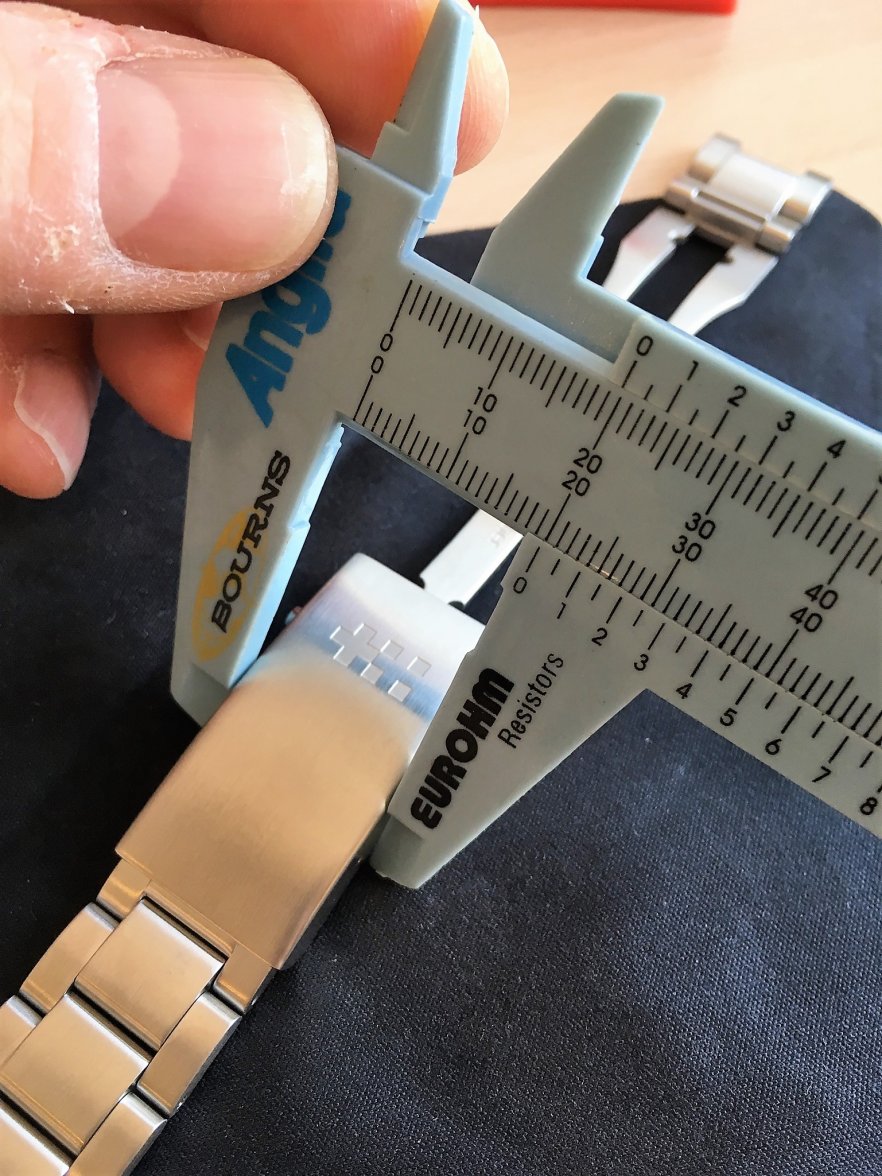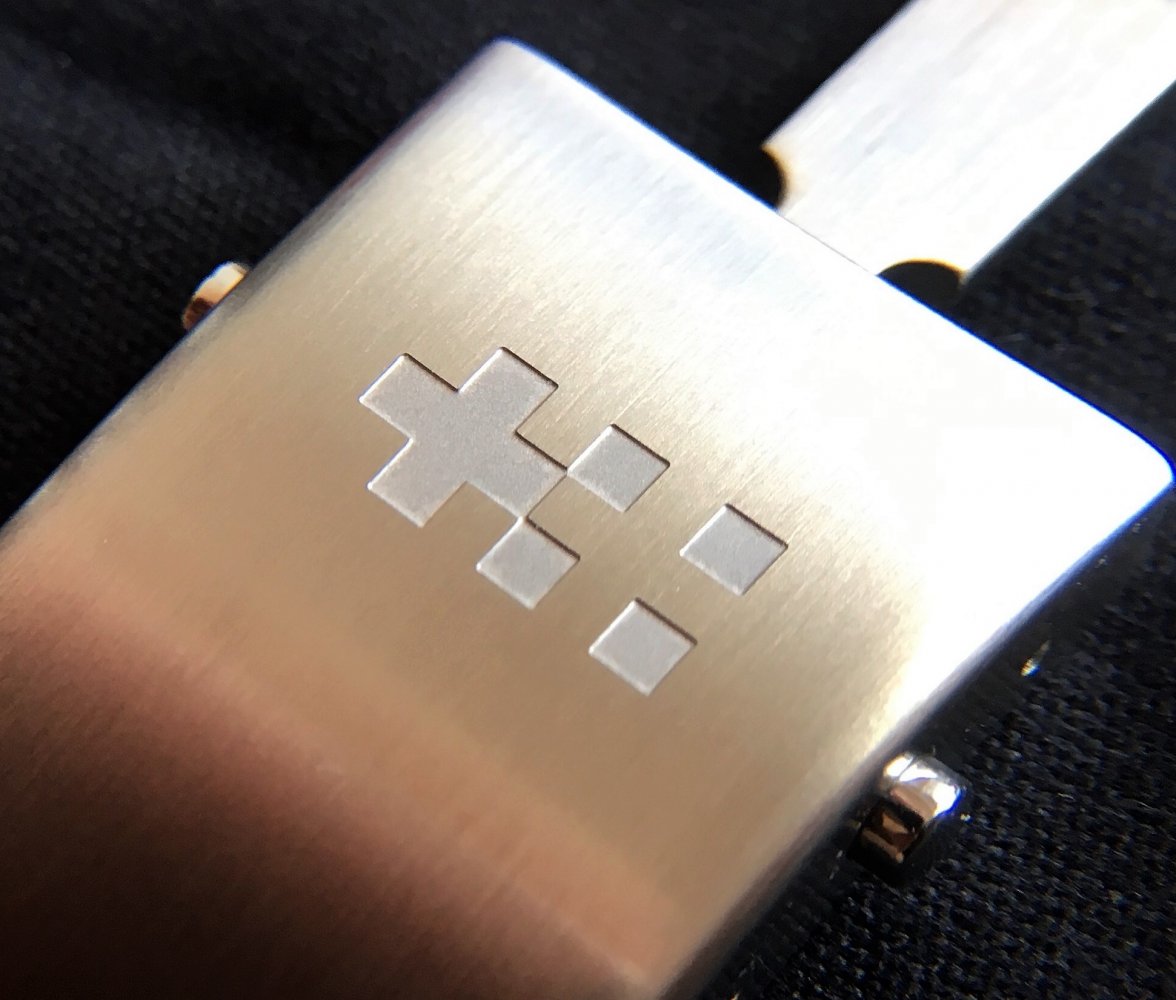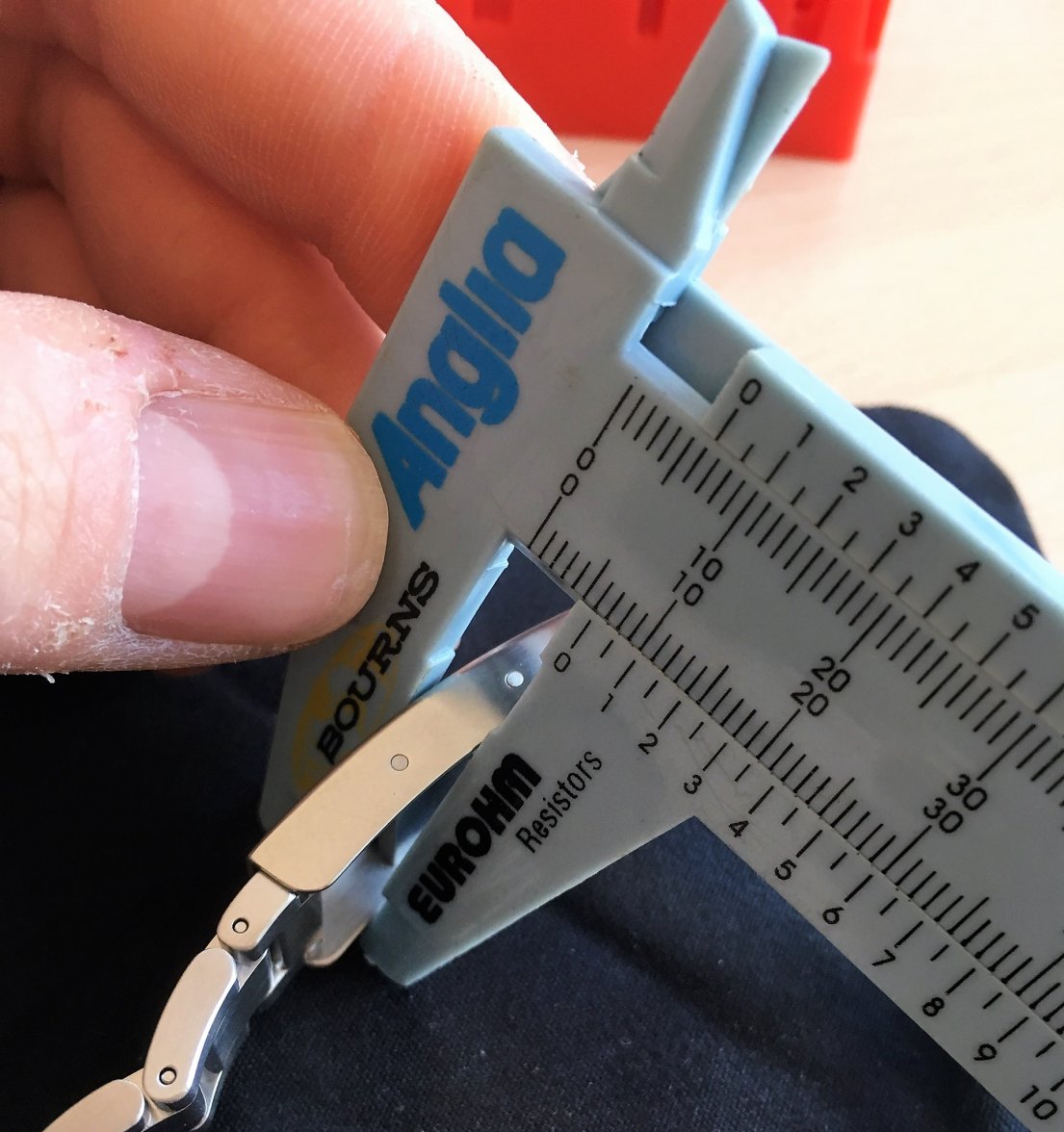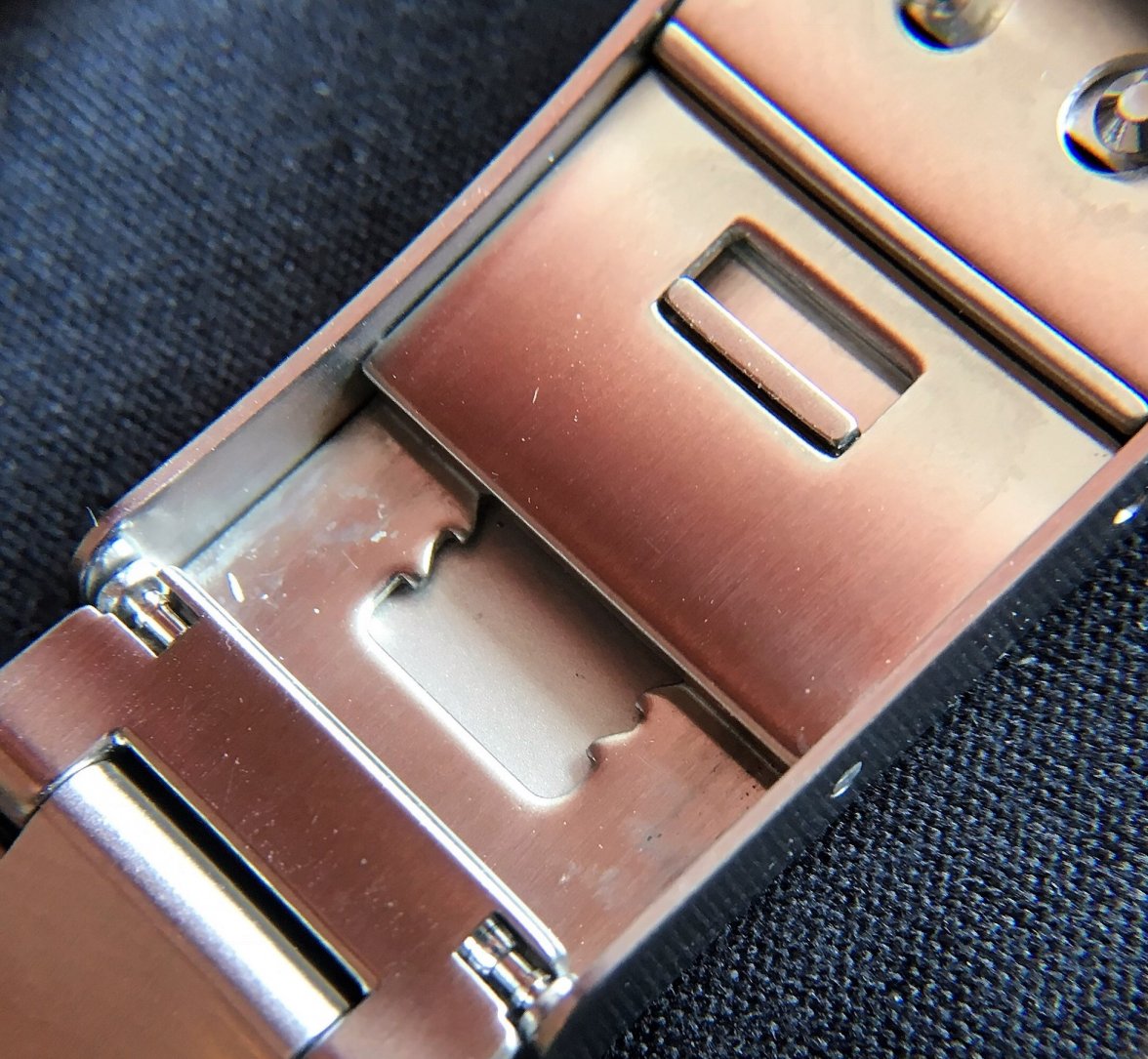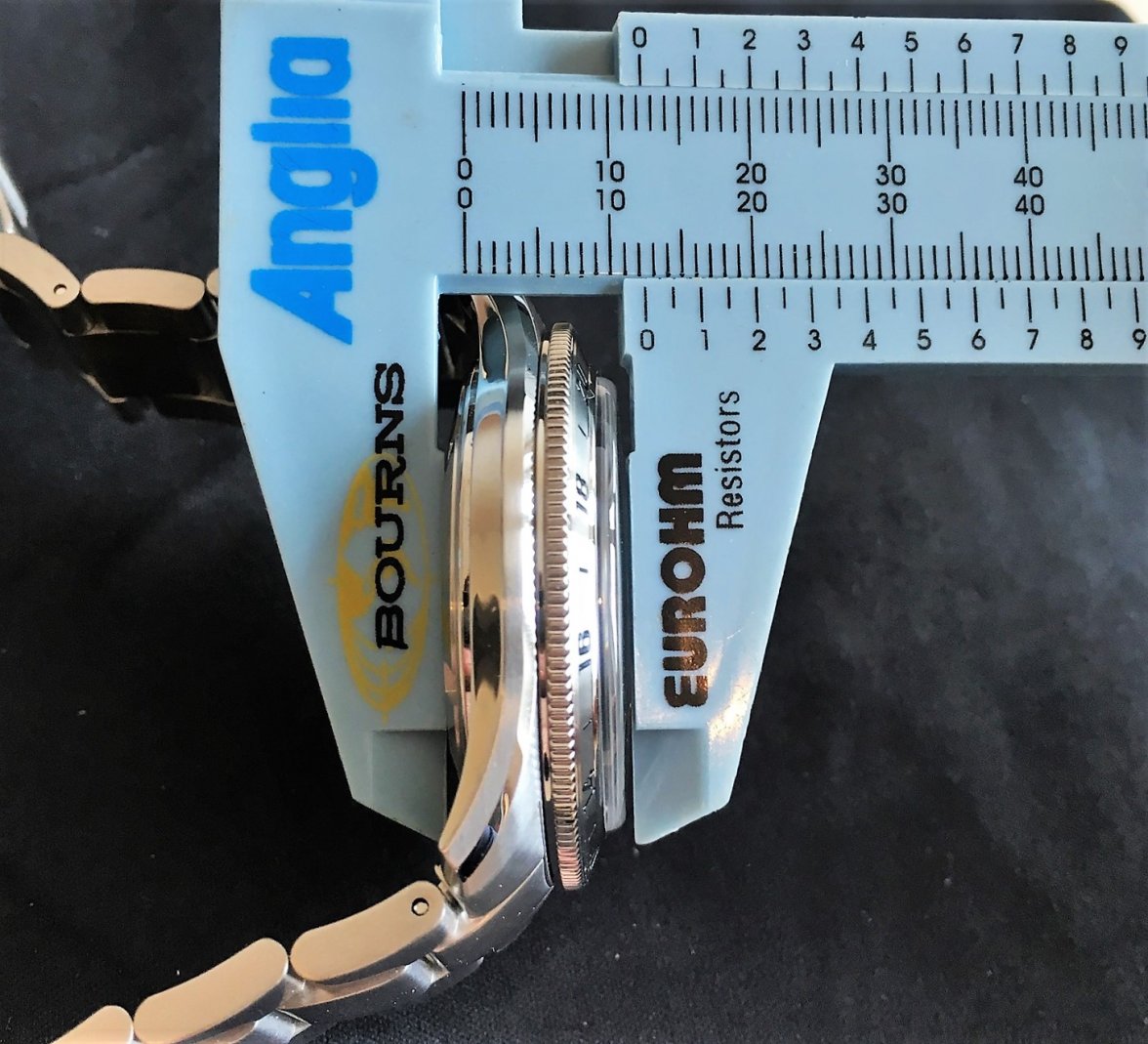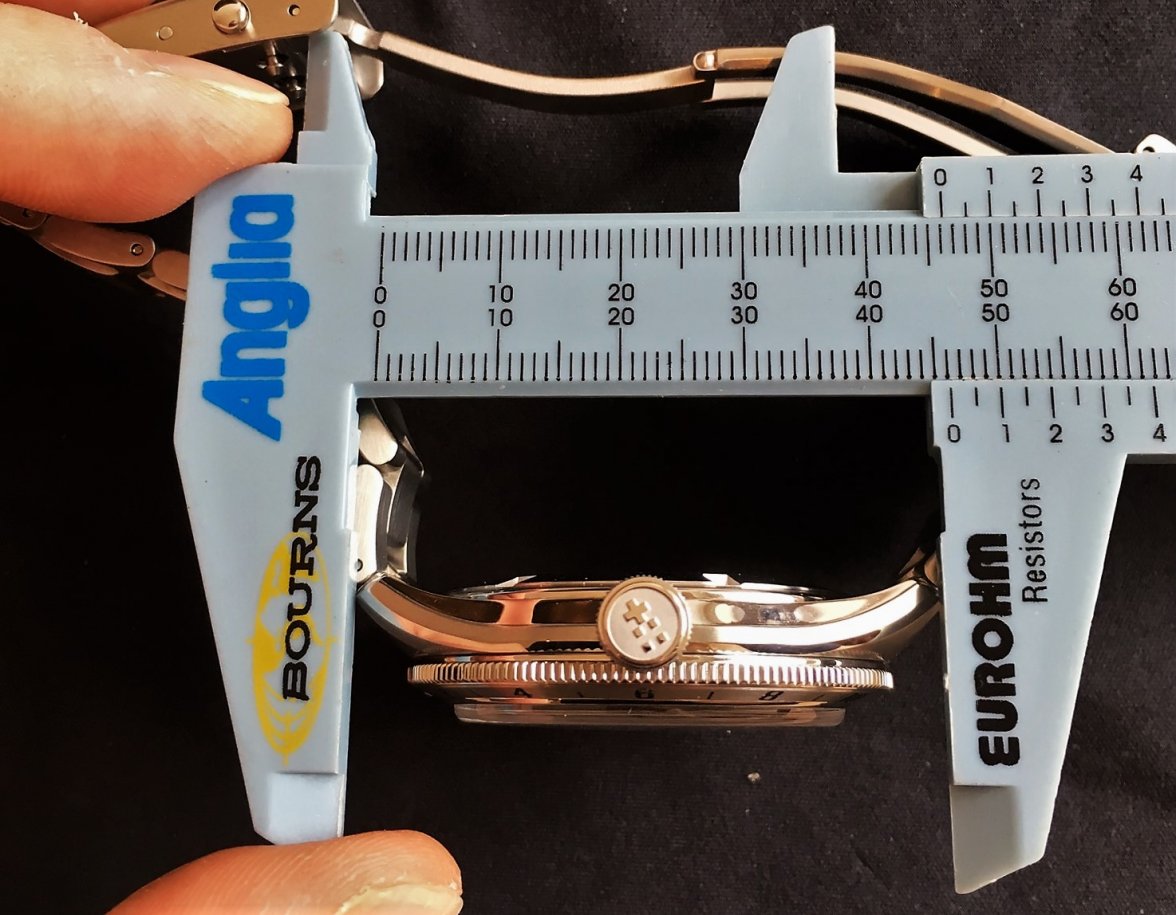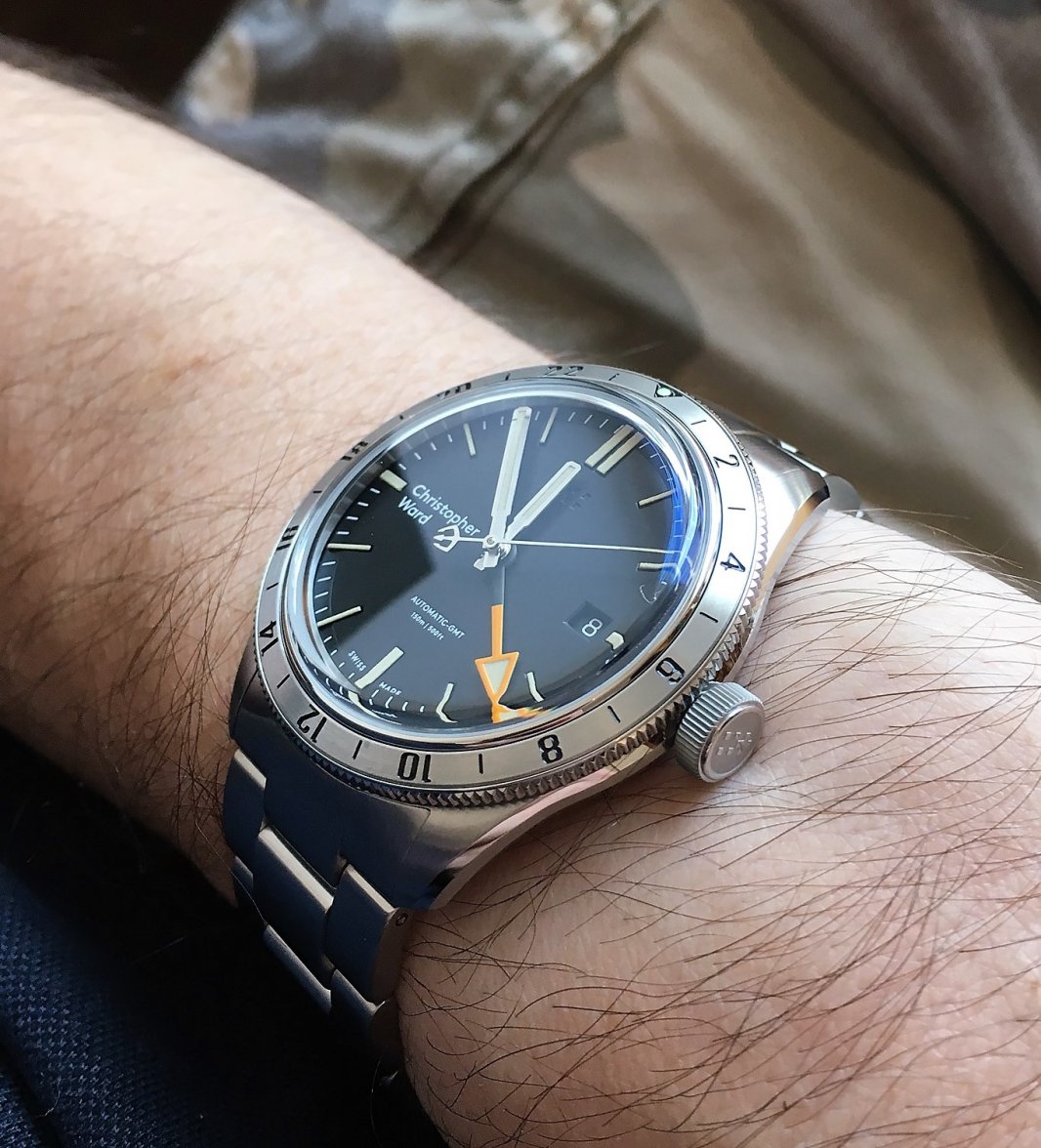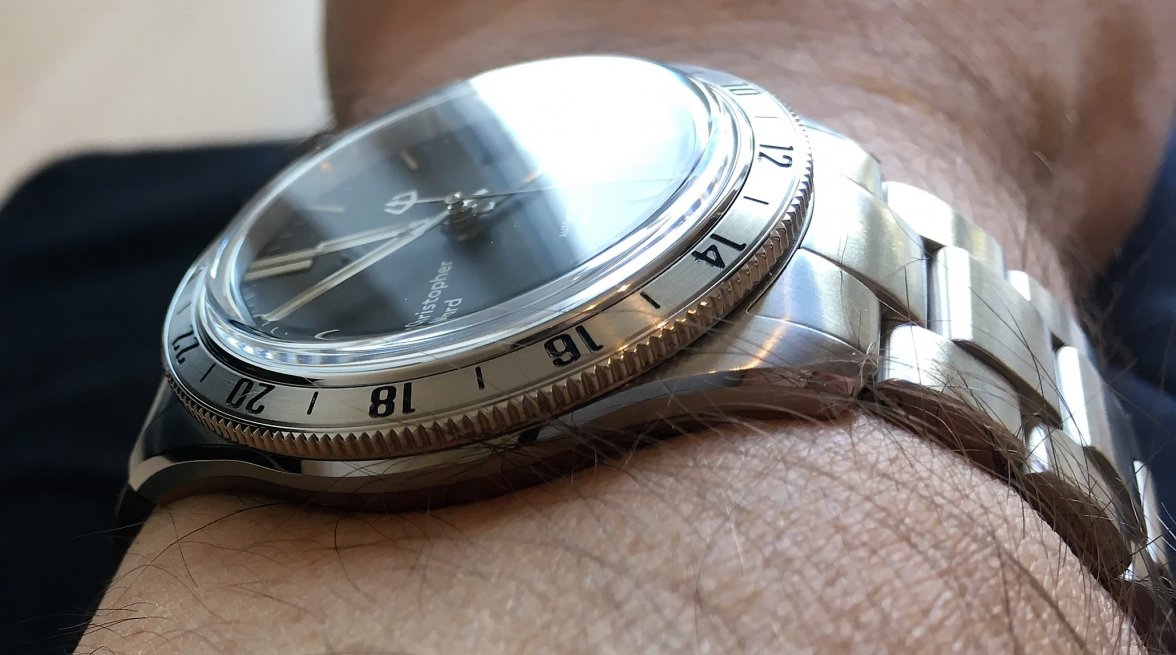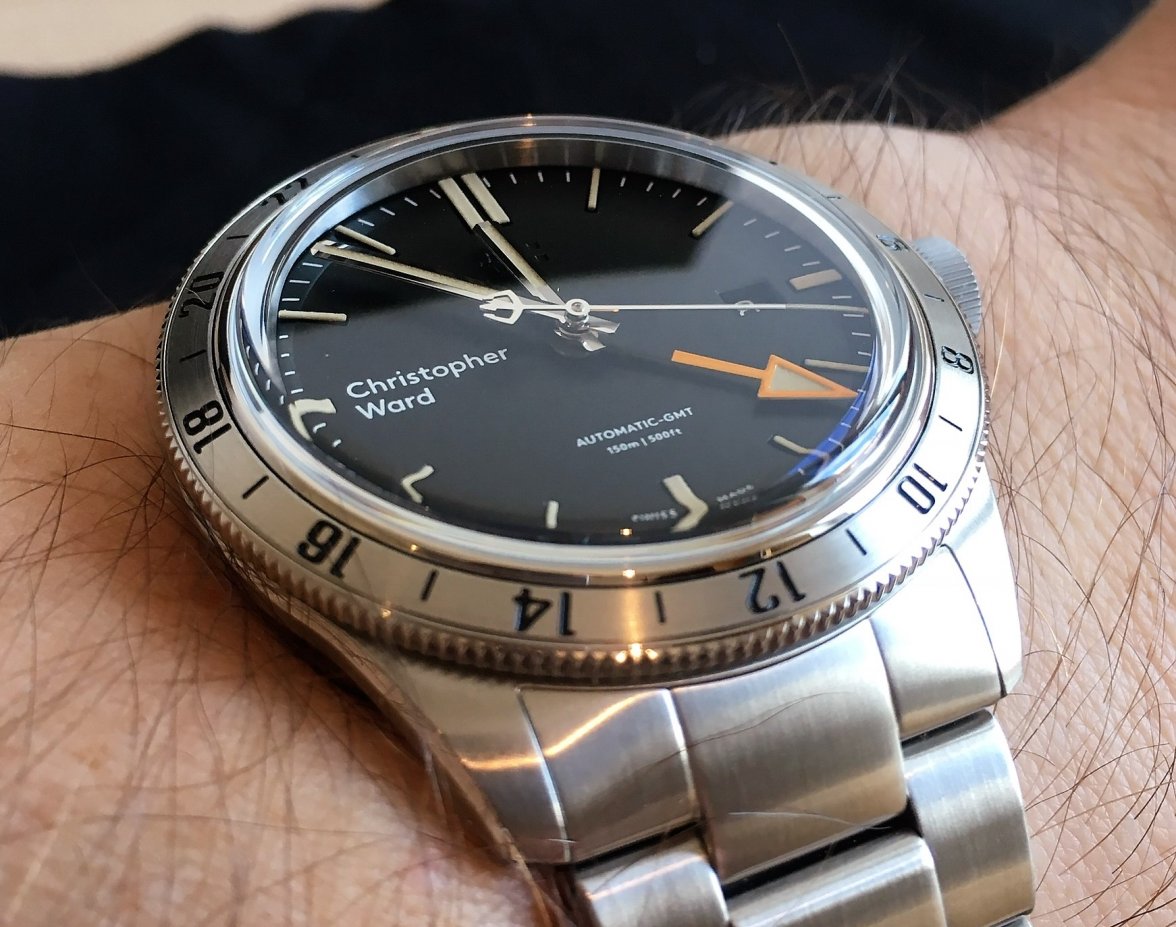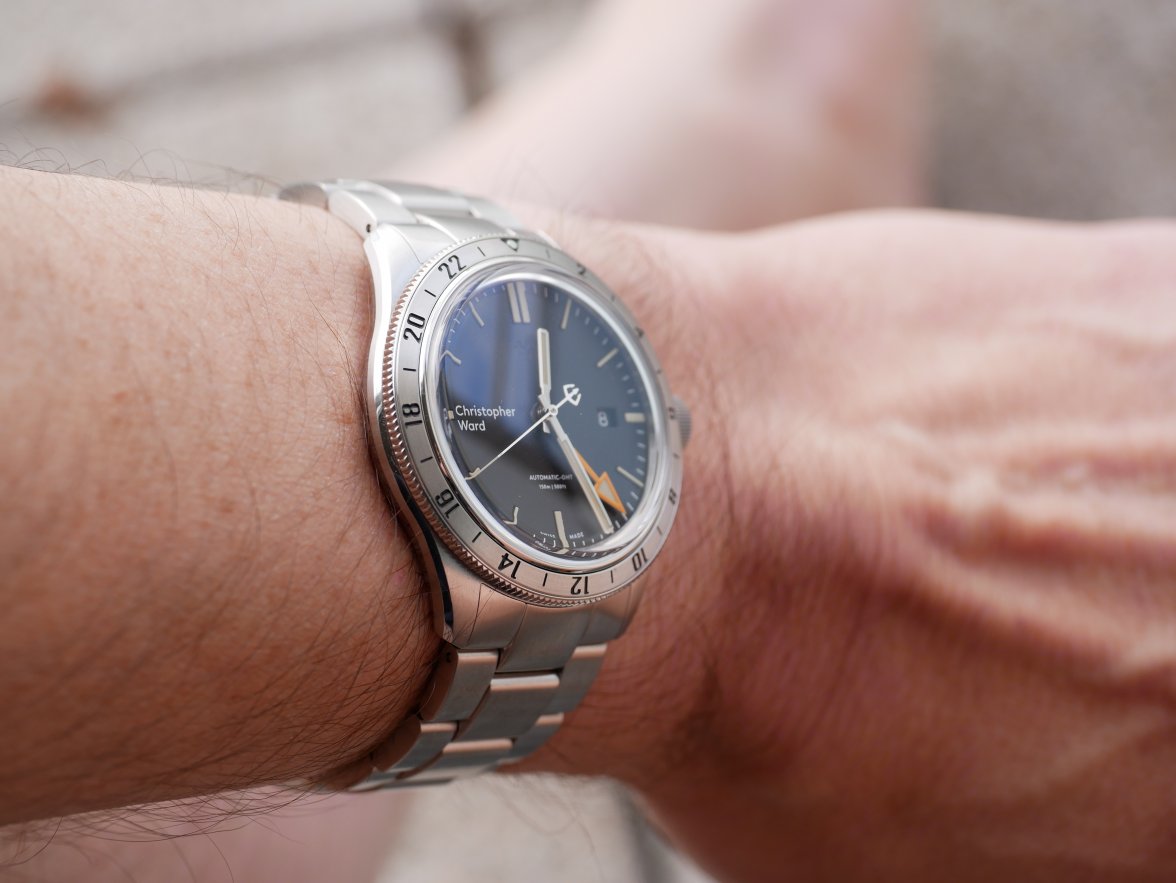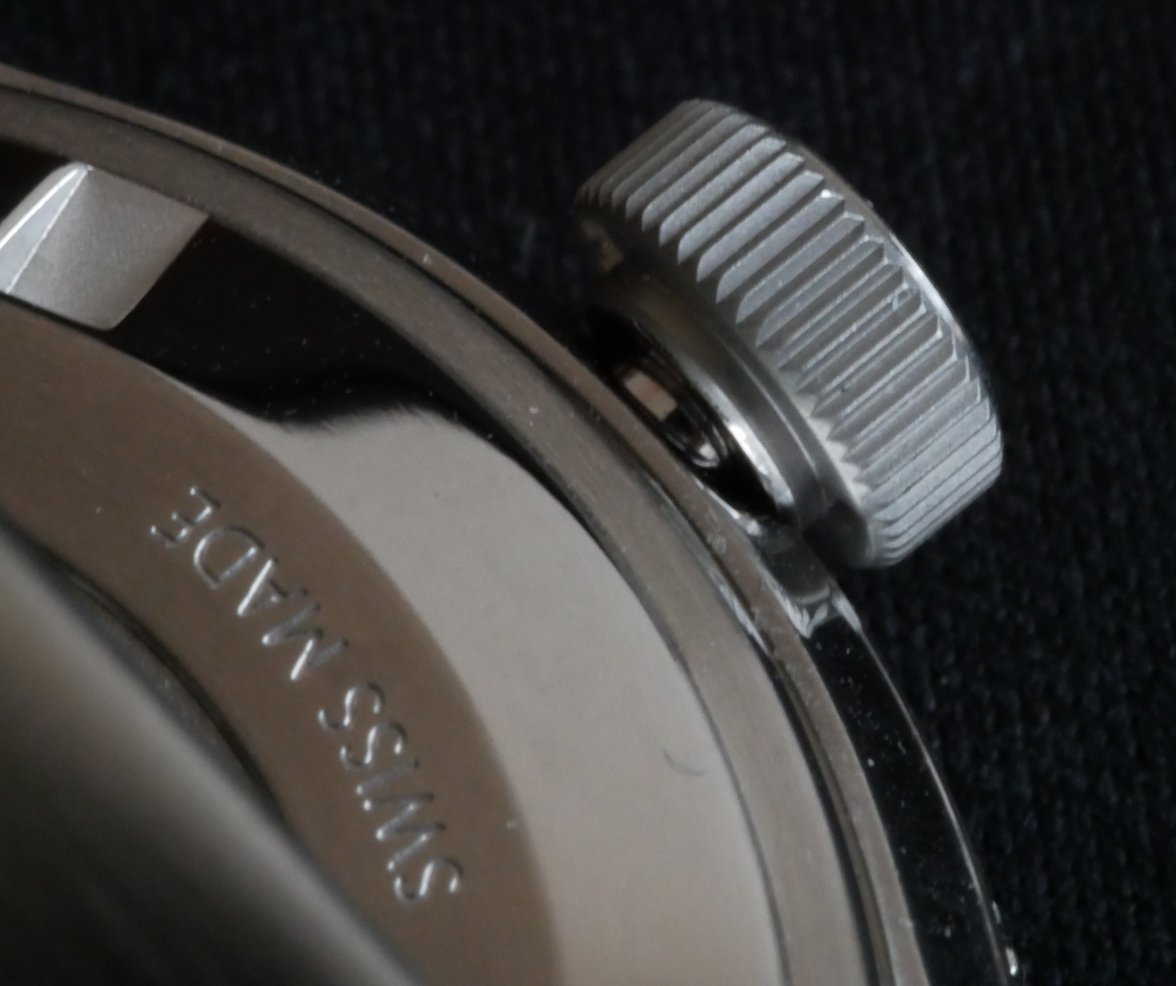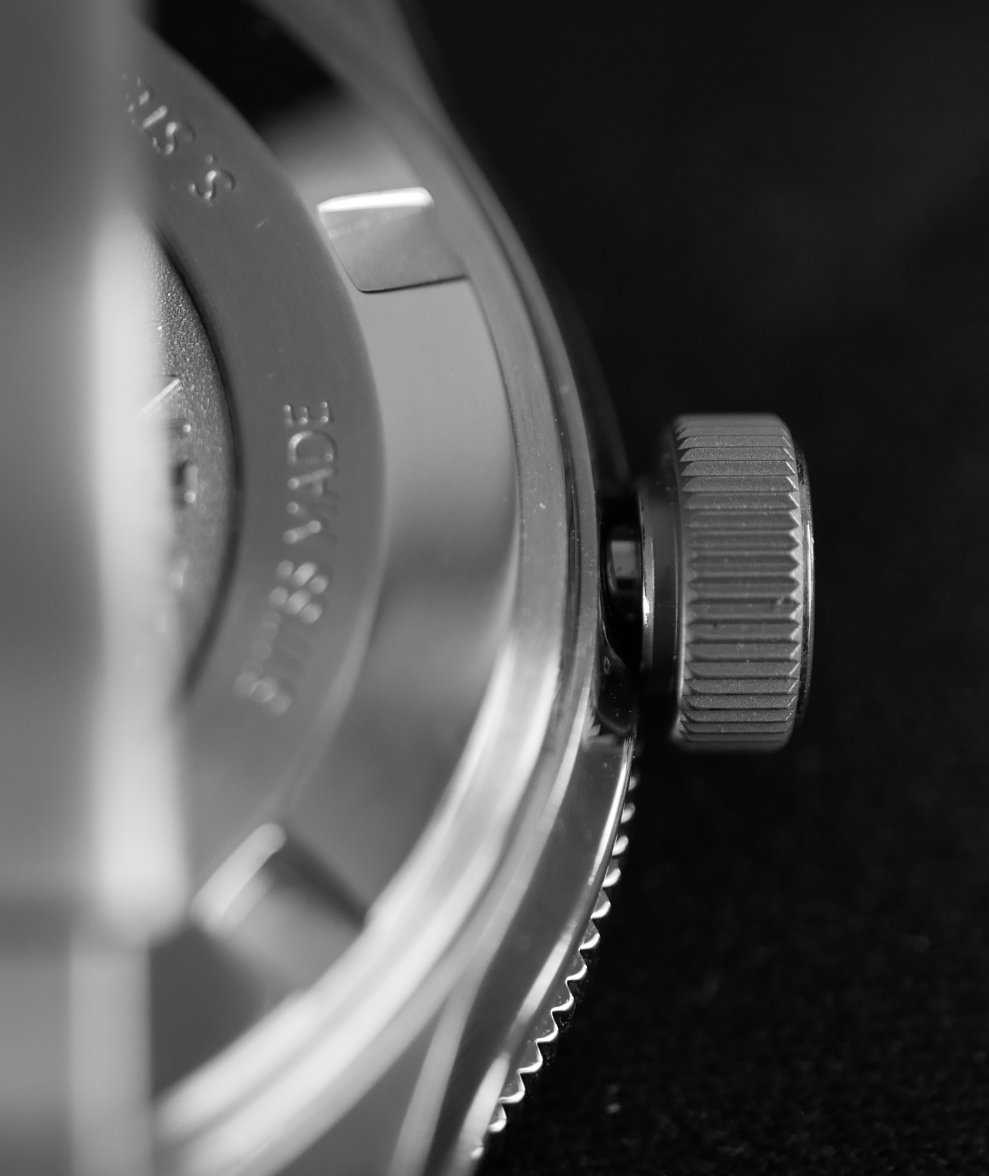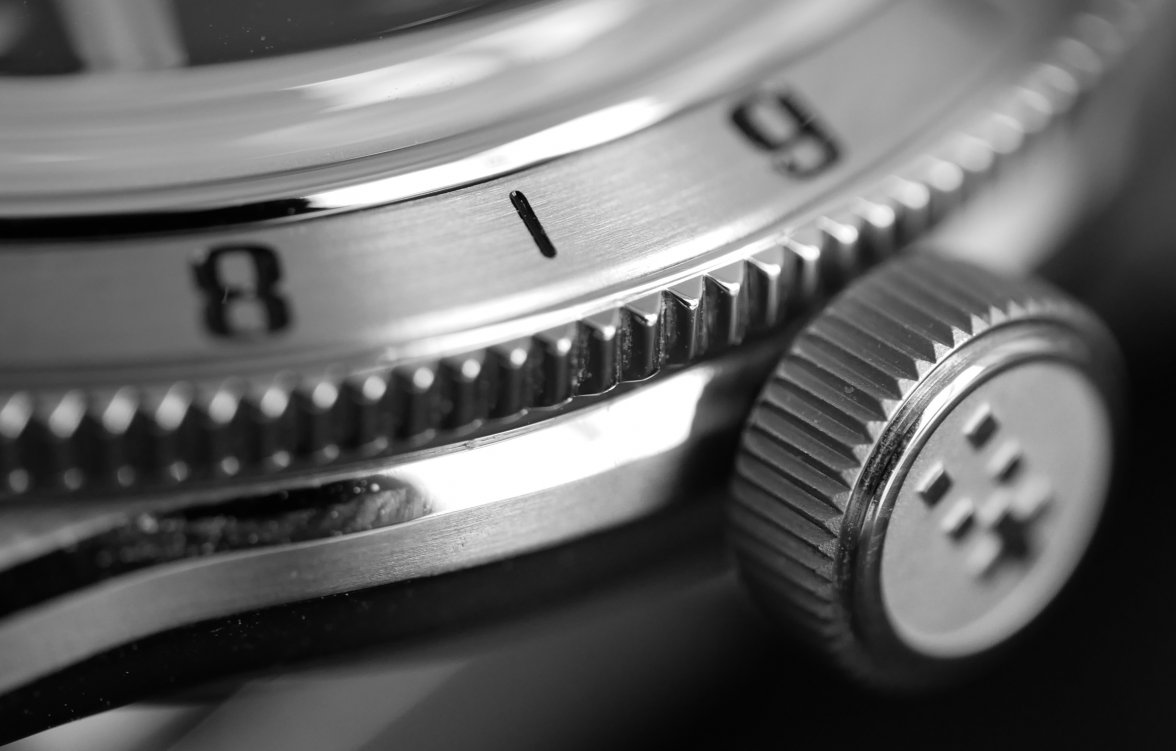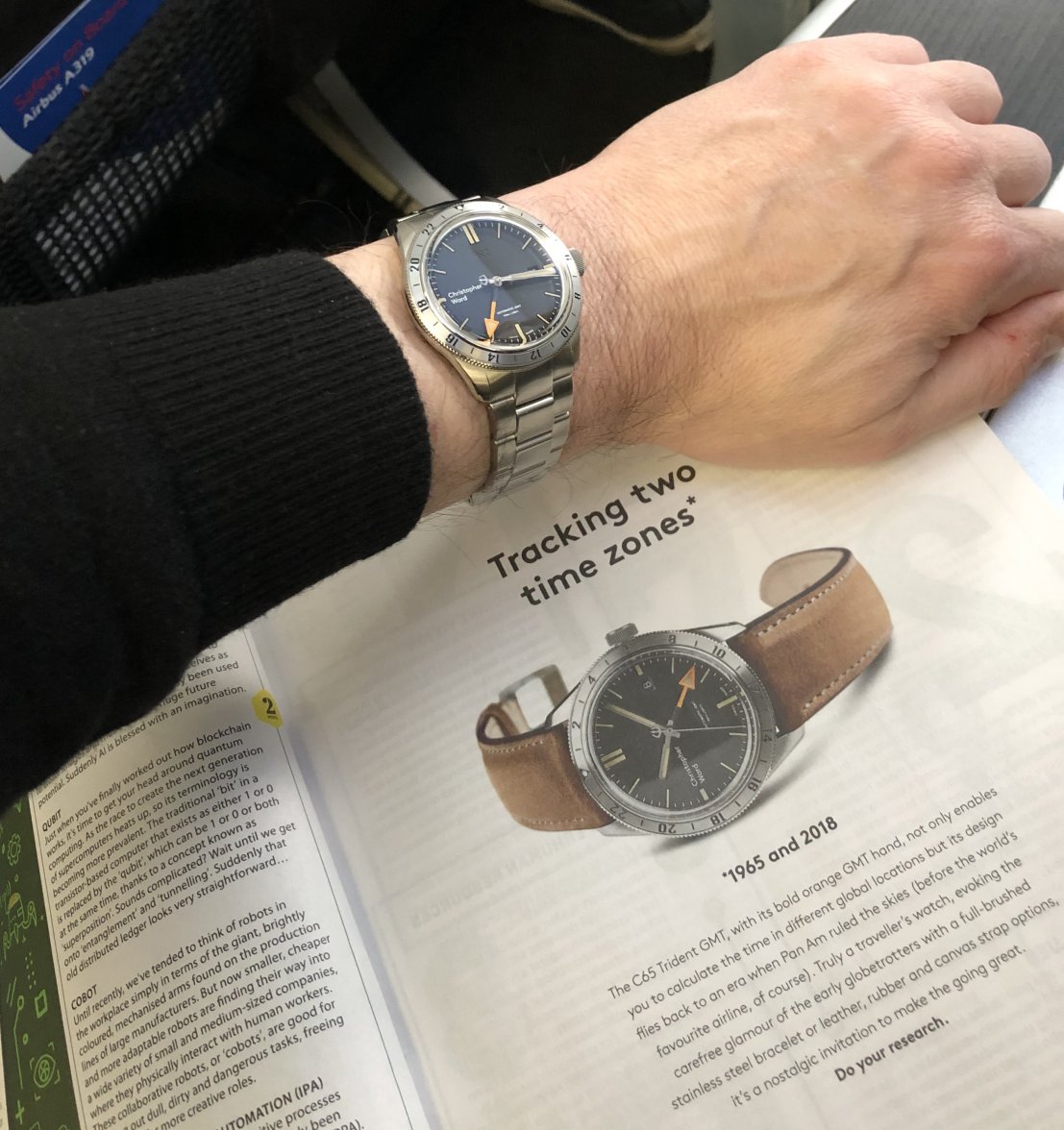Part 2
After a short night’s sleep and an overwhelming desire to get the thing properly on my wrist and into action it was necessary to remove the hang tag and shorten the bracelet. I also took the opportunity to take some more close-up photos and fill in some of the gaps missed from Part 1.
I’m not sure what the correct name for this link attachment system is but I would just call it pin and sleeve. It’s dead easy to re-size, as long as you have the right tools to hand.
Even though the decision to buy was ludicrously short there was an aspect to the watch that I suppose could be described as the tipping point., namely the bracelet or more specifically the clasp.
I just happened to notice that it had a micro-adjustment feature with a claimed range of 8mm. After the rather piffling range on my Railmaster LE that sort of extension range is genuinely useful. So let’s take a look at that aspect in more detail. Starting from the watch head and working down.
The lugs and end-links are 22mm (well I guess the end-links must be fractionally smaller). The first bracelet link is 21.5mm where it joins the end-link and starts to tapper down from there.
As an aside I have to say the fit and finish is just excellent. I mentioned it before, but I was half asleep then. Now in the cold light of day…it’s even better. It’s not just that the gaps are tiny, but the end-link curvature so precisely follows the lug curvature.
Moving onto the bracelet itself, the first three links on each end are fixed to one another and tapered. I’m not entirely sure why the first link needs to be pinned to the end-link, because the end-links are fully removable from the case. Anyway, after the three tapered links we have three removable straight links on each side, which look like this when removed:-
Continuing onwards we arrive at the last links joining the clasp.
This is where I think it gets quite interesting. Omegas and Rolexes with extension systems have rather chunky clasps. This one has an outer frame that is probably folded metal but almost looks milled. It isn’t much wider than the last bracelet link.
That sort of subtle transition from bracelet to clasp would have done the Railmaster LE a huge favour in my opinion.
Since the clasp logo is visible let’s have a closer look at that too.
Probably laser etched from the look of the surface within the squares.
Flipping it onto its side we can see how thick the clasp is.
Well, it isn’t very thick at all; it’s more like a classic vintage friction clasp…except it isn’t, it has an impressive double pin system, each independently linked to its respective pusher on the side of the clasp.
That strange tab in the middle is for operating the extension system, it’s the release lever. You just pull it towards the pins and the bracelet can slide outwards, like this:-
And that is ….
…indeed 8mm. You may also have noticed the saw tooth profile in there. That allows you to simply push the bracelet back into the clasp once it is closed and on your wrist to achieve the desired degree of tightness…much like the solution on the PloProf mesh clasp.
All in all a well thought out solution that looks good and works admirably.
Before I zoom in on a few additional features I would like to address why this watch, at least to me, is one of the most comfortable I have tried.
First the case dimensions and shape
12mm sounds pretty run-of-the-mill but the lug form and size combined with chamfered bevelled edges and the bezels tapered annulus break those 12mm up leaving an impression of a very slim watch head and that’s exactly how it wears, like a very thin watch. When I think about how thick an Omega Planet Ocean GMT is, or the way the new raved-about Tudor Pepsi GMT looks with its DDR Plattenbau flanks…no the C65 is a different beastie all together. It has wrist-hugging form and dimensions.
I’ll close out by showing a few last close ups of the case back and crown.
